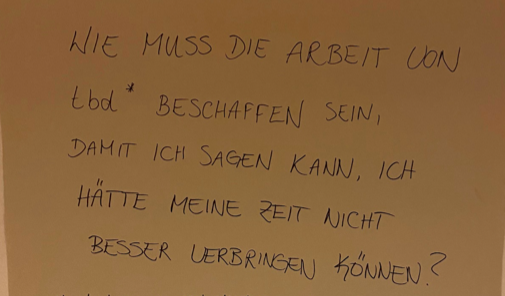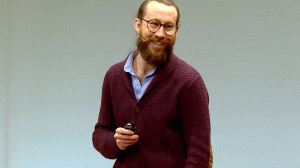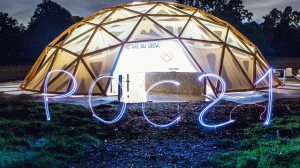Header: Alexandra Nicolae via Unsplash
In the article Our Purpose Journey: How It All Began we started sharing our experiences regarding tbd*s change process from a hierarchical company to a self organized one. We want to pick up the thread again and report on how our process continued. We will share everything about our communication coaching, our trial and error and the confusion that befell us... until we finally did a Dragon Dreaming workshop.
After our retreat last summer at the Coconat in Bad Belzig we were full of hope, ideas and plans. We started to experiment enthusiastically with new ways of working: we did a Scrum workshop, we tried to work with sprints, we did workshops on agile – we wanted to overcome our hierarchies and work in a self-organized way. But we soon realized that it wasn't working (yet).
What does New Work and self-organization mean to us?
On our first Remote Team days it became apparent that we didn't have a common understanding of "New Work". Was it Holacracy? Scrum? Agile? (and what does all this mean anyway?) Or do we want something completely different? What suits us? Do we want to work based on roles? Who should take on which role? What did that mean for our other tasks? Who makes which decisions? Some people in the team felt lost and overwhelmed. Others were frustrated at the lack of progress. We didn't have a consistent plan for how to make the transition from theory to practice.
[recommended:13384]
It was about time to seek support. We found it with the ladies of beispielsweise, an organisational development consultancy, who started coaching us as a team on a bi-weekly basis.
Every two weeks, our coaches Maren Drewes and Claire Born supported us in communicating openly, authentically and with a high degree of empathy and self-reflection and helped us to tackle some of our challenges, fears, resentments and frustrations.
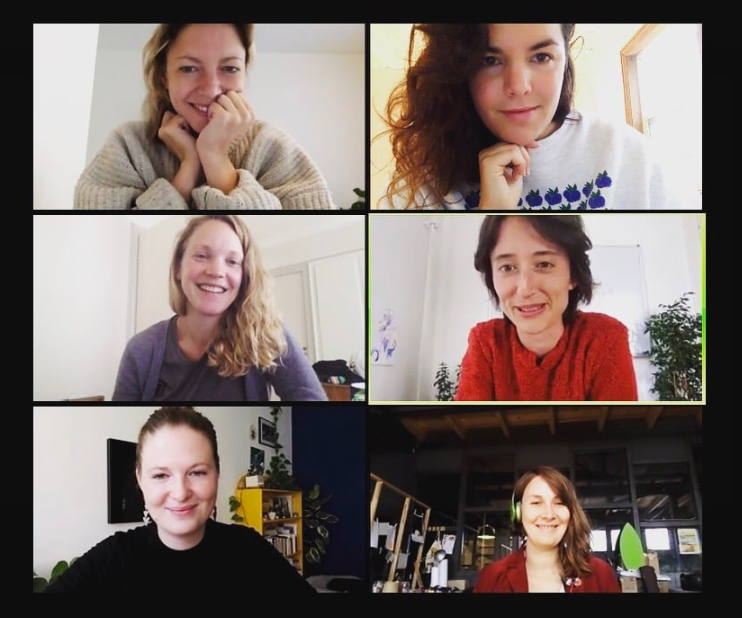
tbd* and beispielsweise during a meeting in 2019
What distinguishes project-based self-organization from organization-based self-organization?
With project-based self-organization, teams are only self-organized in certain areas or projects. The entire organization, on the other hand, can be organized hierarchically. Project-based self-organization includes agile working methods like Scrum, Kanban, Design Thinking or OKRs. The main goal here is to create better products for customers or users and to be able to react quickly to external developments. Many of these methods originate from software development and sometimes it's difficult to adapt them for other areas of the business.
In the case of organization-based self-organization, however, the aim is for the organisation to be managed collectively by everyone. This means that the classic tasks of management are divided among different groups or roles. These include models such as Holacracy, cooperatives, collective leadership or the collegial enterprise.
In summary: Teams can use agile methods without being self-organized or there can be self-organized organizations that do not use agile methods.
"We are living the self-organization within the self-organization!"
Based on this Maren und Claire helped us to realize that we had tried to introduce both – project-based (Scrum, Sprints) and organization-wide self-organization (role-based system) – at the same time, and we had done so without a uniform strategy and a common knowledge base. So it was no surprise that this led to a feeling of overwhelm and insecurity! Phew! Our coaches therefore recommended that we should take small steps from the current state to the desired state. We should not try to radically change everything overnight, but rather introduce small changes that take our values and goals into account.
Therefore, we decided against immediately transferring the responsibilities of Naomi and Nicole, the managing directors, into roles and distributing them to everyone, but to hand them over step by step. In this way, everyone who wants to take on a new role would be supported and given the necessary knowledge and skills by the managing director who previously performed these tasks. This also corresponded to our values, because learning and trust are two particularly important values within tbd*.
Where should the journey go?
But what was still missing was a common mission and vision. We had many ideas, but we hadn't yet found a common approach to them. The uncertainty that emerged as a result of the restructuring was particularly evident here. Different needs appeared in the team. While some wanted to orient themselves first, others wanted to look ahead and move on. This led to frustration on both sides. In order to resolve this situation, we decided to hold a Dragon Dreaming workshop on our next team days (this time with everyone on site in Berlin instead of remotely) to find a common vision. Dragon Dreaming is a method to implement creative, collaborative and sustainable projects.
In November we rented a room for two days and took the time to focus on us as a team. The wonderful Anja Adler accompanied us as a moderator and facilitator.
She guided us through the Dragon Dreaming process with the goal of enabling us to find out together what we want to do, how we position ourselves and what we will focus on over the next year. The process consisted of four parts:
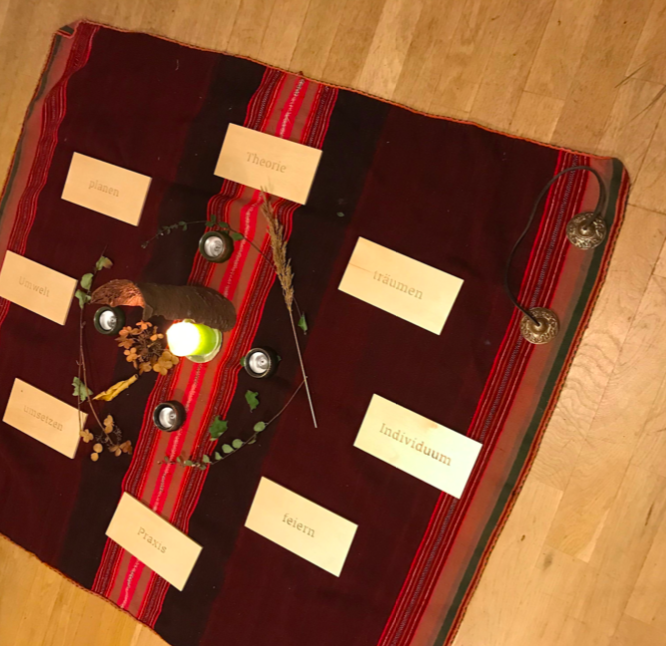
Dragon Dreaming Workshop
- Arriving: To ourselves, to the team.
- Dream Circle: Free and creative visualization
- Collective prioritization: Joint decision on which dreams will be realized first.
- Setting goals/milestones/roles/budget.
Through this process we came into contact with ourselves and with others in the team. We dreamed and associated together around the question:
What should my work at tbd* look like, in order for me to be able to say that I could not have spent my time better?
We were able to give space to our fears and anxieties, and then redirect them by focusing on common goals. It became clear what is really important to us and where we want to channel our energy:
Wellbeing: We want to be well, and we want to take care of each other.
Purpose: We want to experience meaning and share it with others.
Diversity: We want to make our team and the sector more diverse.
Impact: We want to experience and increase our impact.
Based on these goals we developed a common mission and vision together with Anja, a schedule for the next months and collective goals, which we laid down in OKRs (Objectives & Key Results).
We concluded our team days with a ceremony in which we all solemnly signed and thus adopted our Manifesto. We had achieved a lot during our Team Days and it felt as if we had overcome the blockades of the last months. But we were and still are aware that we are in a process. On a Purpose Journey. We had come a long way, but there was still a long way to go.
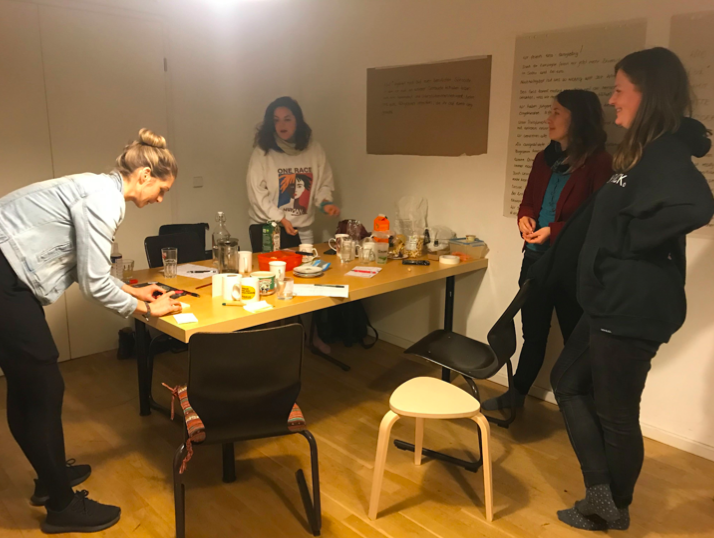
What we've learned during this process:
- Frustration and confusion are part of the process. When all structures dissolve, uncertainty and fear arise. This need to be counteracted by trust, communication and increased inner structures like self-reflection and empathy. Moderation and an external view is helpful here. We addressed this problem by introducing regular team coaching sessions in which we openly and honestly communicate our difficulties.
- When it comes to the question of which working methods and organizational methods are most suitable for self-organized work, the rule is: always try them out, adapt them, talk about them. It's important to talk about everyone's needs and limitations again and again (and again!). We believe that there is no one-size-fits-all solution – each team must decide for itself what fits best.
- Without a common mission and vision based on shared values, the best team organization will not help.
Next Steps
In the next article we will share how we brought the "management" roles we had assigned to us to life (and what went wrong), how we dealt with the issue of decision making, and how our cooperation and teamwork changed. In a nutshell: how our Purpose Journey continues.

